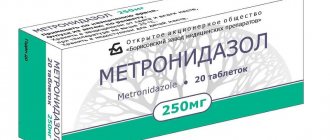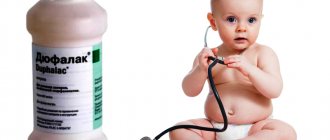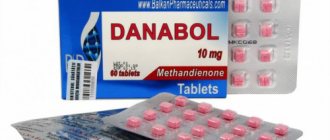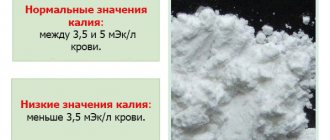Depression is a mental disorder that affects 300 million people, according to the World Health Organization. However, not everyone turns to specialists for help. Access to information on the Internet allows you to independently diagnose the disorder and find a cure.
Amitriptyline is an antidepressant, available without a prescription and used by consumers as a sleeping pill. But in medical circles they are trying to replace the drug with alternative drugs due to side effects and severe consequences of overdose.
Description of the drug
Amitriptyline is the very first synthetic antidepressant. Despite the age of the invention, it is still used today. Pharmacological group of the drug is tricyclic antidepressants.
The mechanism of action is to inhibit the uptake of serotonin and norepinephrine (mediators of happiness) by nerve cells, as a result of which they accumulate and exhibit their enhanced effects. Analogs have the same effect on the body.
With long-term use, it balances neurohormonal relationships that are disturbed during depression. The therapeutic effect occurs after 2 weeks. Available in tablets and solutions for injection.
The composition of dosage forms of amitriptyline may include: lactose, starch, talc and other substances, which must be taken into account if you have hypersensitivity to them. Currently used in psychiatric practice, it is released strictly according to prescription. The most famous analogues are tryptisol, saroten, imizin.
Compound
Composition of solution for injection:
- active agent – amitriptyline hydrochloride;
- excipients – glucose (dextrose), water for injection.
Composition of film-coated tablets:
- active substance – amitriptyline hydrochloride;
- excipients – magnesium stearate, talc, povidone, potato starch, microcrystalline cellulose, lactose monohydrate.
Shell composition: propylene glycol, hypromellose, titanium dioxide, talc. Tablet composition:
- active ingredient – amitriptyline;
- excipients – lactose, magnesium stearate, microcrystalline cellulose, croscarmellose sodium, polyethylene glycol 6000, talc, polysorbate 80, colloidal silicon dioxide, hypromellose, titanium dioxide (E 171), carmoisin (E 122).
Composition of extended-release capsules:
- active substance – amitriptyline hydrochloride;
- excipients - stearic acid, sugar spheres, shellac (unwaxed shellac), talc, povidone.
The composition of the empty capsule is gelatin, red iron oxide dye (E 172), titanium dioxide (E 171).
When is amitriptyline prescribed?
Main indications for use of the drug:
- all types of endogenous depression (involutional, psychotic, with brain damage),
- enuresis, encopresis in children,
- colon irritation,
- childhood depression,
- emotional disorders with a predominance of anxiety, obsessive states,
- mental anorexia, bulimia,
- to suppress chronic pain syndrome.
Given the broad pharmacological effects of taking amitriptyline, it should never be taken in the presence of the following conditions:
- allergy to the components of the drug, pregnancy, breastfeeding, age under 6 years – a strict contraindication,
- glaucoma (can dilate the pupil, causing an attack),
- simultaneous use of MAO inhibitors, for example nialamide, transamine (possible development of serotonin syndrome),
- epilepsy,
- pyloric stenosis, atony of the bladder and intestines (the drug aggravates these phenomena),
- decompensated heart failure, coronary heart disease, paroxysmal tachycardia (amitriptyline and its analogues can provoke their occurrence).
Relative contraindications to taking the drug are prostate adenoma, gastric and duodenal ulcers.
Causes
An overdose of Amitriptyline is associated with improper use of the drug. It is important to know that even a slight excess of the dose of the substance can cause coma and death of the patient.
Poisoning with this drug occurs for the following reasons:
- Exceeding the dosage prescribed by the doctor.
- Accidental use of the drug by a child.
- Taking a substance for the purpose of suicide. The drug is used to treat depression and mental disorders. Such people often have thoughts of suicide.
- Use of alcohol with Amitriptyline. Even a small amount of alcohol increases the toxic effect of the tablets.
- Combination of Amitriptyline with other medications. The drug should not be taken simultaneously with anticonvulsants, hypnotics, corticosteroid hormones, and antipsychotics. Also, the drug cannot be combined with other antidepressants, analgesics and MAO inhibitors.
Side effects of amitriptyline
This is due to the fact that in addition to the antidepressant effect, the drug also has antihistamine and anticholinergic effects. The most common side effects are:
- feeling of dry mouth,
- dilated pupils (mydriasis),
- violation of accommodation (false myopia),
- delay in emptying the bladder and bowels,
- drowsiness, dizziness,
- trembling of the upper extremities, tingling sensation, crawling sensations,
- arrhythmias (feeling of heart dysfunction).
It is worth noting that such consequences of taking, although frequent, are insignificant and do not require discontinuation of the drug.
Price/efficiency/safety ratio. Different opinions
There is a significant risk of amitriptyline abuse (use in high doses to achieve euphoria). Doctors and researchers have varying opinions about how often this drug should be used. After amitriptyline was included in the list of drugs in Ukraine and became unavailable for most patients from October 1, 2011, the opinions of doctors on this issue were divided.
Some doctors and researchers supported the changes, noting that although effective, amitriptyline has many side effects, some of which can be dangerous, and is less tolerable and less compliant than newer antidepressants. Drugs of new generations, while not inferior in effectiveness, have significantly fewer side effects, allowing the patient to completely restore the social functioning and maintain it during the entire period of therapy, sometimes very long and lasting years. According to international studies, taking amitriptyline increases the risk of cardiovascular complications by 35%, even in those patients who did not have cardiovascular pathology before starting therapy. “What kind of restoration of activity can we talk about if a patient taking amitriptyline, due to its side effects, has difficulty answering the doctor’s questions due to constant sedation, decreased cognitive functioning, dizziness, nausea, dry mouth,” notes the doctor of medical sciences, Professor O. S. Chaban. “...Most outpatients, in order to improve tolerance, take TCAs, in particular amitriptyline, 25-50 mg, which in fact has nothing to do with the antidepressant effect,” points out psychiatrist, candidate of medical sciences S. A. Malyarov. At the same time, criticism of the use of amitriptyline expressed by these authors is accompanied by advertising of new antidepressants, mainly melitor (agomelatine).
The authors quote from the 2010 International Consensus Statement on the Treatment of Depressive Disorder (Nutt DJ, Davidson JR et all, “International consensus statement on major depressive disorder,” J Clin Psychiatry 2010; 71 (suppl E1): e08): “ ...The poor tolerability profile and severity of side effects of tricyclic antidepressants significantly impair patient adherence to therapy and lead to increased morbidity and even mortality, which does not allow them to be recommended as first-line therapy, despite their low cost...”
The opposite opinion is expressed by V. A. Pekhterev, a doctor at the Donetsk Regional Psychoneurological Hospital, a specialist with many years of clinical experience. According to V. A. Pekhterev, amitriptyline is the drug of choice for poor patients, an irreplaceable, reliable and proven drug for decades, optimal on the Ukrainian pharmaceutical market in terms of price-quality ratio. “I can’t help but advise an elderly rural woman, looking her straight in the eye, an antidepressant, which is debatably better than amitriptyline, but undoubtedly 20 times more expensive. <…> The advertising-biochemical-boring song, which is memorized by medical representatives and which is picked up by quick-witted holders of scientific degrees and titles for a bribe, does not “roll” here. <…> If the patient’s eyes and ears are sealed with money, if he is accustomed to using them to protect himself from the slightest discomfort and pain, and also to elevate himself with his spending above those around him, then when choosing, you should take into account the price of the drug. For these patients, the most expensive antidepressant is often the best,” the author states. According to Pekhterev, the ban on amitriptyline is explained by the efforts of people whose production task is to promote their more expensive drugs on the market; Amitriptyline is in no way a drug, although drug addicts use this drug in “cocktails”, like many other drugs - in general there is no non-medical demand for amitriptyline. The author notes that amitriptyline is used to treat drug addicts, for sedation of those who abuse psychostimulants, and in the treatment of alcoholic depression.
How to take Amitriptyline?
Only a psychiatrist can prescribe the correct treatment regimen. The dosage is selected individually. The starting dose is 25-30 mg at night, and then, if well tolerated, the dose is increased per week to 150-200 mg, but not higher. If there is no effect in the second week, it is possible to increase the dose to 300 mg, followed by a decrease to 100 - 150 mg. Most of them are still taken at night due to their hypnotic effect.
When prescribing Amitriptyline to children, it is worth remembering that the maximum dose in pediatric psychiatric practice is 100 mg. The course of treatment lasts on average from 3 to 6 months.
Pharmacokinetics
It is believed that the drug Amitriptyline has good bioavailability. Reviews, as a rule, confirm this. Bioavailability of the drug is 31-61%. It binds to blood proteins by 82-96%. Metabolization occurs with the formation of the metabolite nortriptyline (active). The half-life is 31-46 hours. The drug is excreted primarily through the kidneys.
What are the consequences of taking Amitriptyline with alcohol?
When these substances are taken simultaneously, they mutually reinforce each other, which leads to the most dangerous outcomes. Inhibition and depression of the central nervous system occurs. Initially, severe drowsiness sets in, which is replaced by severe psychomotor agitation, delirium, hallucinations, increased body temperature, and disorientation in space.
The organs of the gastrointestinal tract immediately respond to this combination. The consequences of this are nausea, vomiting, diarrhea. With large amounts of alcohol, liver necrosis is possible. The greatest danger is the development of heart attacks and strokes, the frequent outcome of which is death.
Existing contraindications
Patients who have a history of myocardial infarction or severe dysfunction of the cardiac conduction system should not start taking antidepressants. The drug is not recommended for people suffering from alcohol intoxication and poisoning from sedative and hypnotic medications. "Amitriptyline" is not used in women during lactation, and is also not prescribed to patients under 6 years of age. Some hereditary diseases leading to metabolic disorders are a contraindication to the use of tricyclic antidepressants.
The drug should be prescribed with extreme caution if a patient has schizophrenia or bipolar disorder, since its use may worsen the symptoms of these mental problems.
Is it possible to develop an addiction?
Despite the fact that many people promote its presence, Amitriptyline and its analogues do not cause physiological dependence. This does not mean at all that you can suddenly stop taking the drug, because under such conditions a withdrawal syndrome develops, the main manifestations of which are:
- irritability, increased motor activity, excitability,
- headache,
- nausea, vomiting, dyspepsia,
- colorful dreams, difficulty falling asleep.
To avoid this, you should discontinue the drug gradually, reducing the dosage every week.
What are the symptoms of amitriptyline overdose?
Depending on the amount of the drug taken, three degrees of poisoning are distinguished: mild, moderate and severe.
A mild degree is characterized by an increase in the above side effects - dry mouth, constipation, lack of urination, and others. Occurs when taking 6 tablets, depends on the functional state of the liver.
Moderate and severe degrees are characterized by a gradual increase in the following symptoms:
- increase in body temperature,
- dizziness, drowsiness,
- cardiopalmus,
- disturbances of consciousness (delusions, hallucinations),
- shortness of breath, lack of air,
- nausea followed by vomiting.
In the absence of medical care, clinical symptoms continue to increase. Convulsive seizures, psychoses and other types of increased excitability may occur. Dangerous life-threatening symptoms are:
- drop in blood pressure,
- dilated pupils and lack of reaction to light,
- fading reflexes,
- paresis of the bladder and intestines,
- liver and heart failure,
- stopping breathing.
If resuscitation measures are refused, death occurs in 100% of cases. The lethal dose is more than 1.5 g at a time. A smaller amount is enough for a child. Death can occur when taking Amitriptyline in the usual dosage, but together with alcohol.
Providing medical care in case of poisoning
If you notice the first signs of an overdose, immediately call the emergency service, because this kind of intoxication will not go away on its own. Before their arrival you must:
- let the patient quickly drink a liter of water and induce vomiting, thereby emptying the stomach of drug residues; this activity should be carried out until clean rinsing water appears,
- take enterosorbents orally to reduce the absorption of the drug from the intestine into the blood, for example, activated carbon, enterosgel, atoxil, polysorb,
- if a person is lying unconscious, turn him on his side, make sure that the nasal and oral cavities are free.
Such patients are hospitalized in the intensive care unit. To speed up the removal of the substance from the body, the patient’s stomach is washed out and siphon enemas are given. In severe cases, hemosorption may be performed.
A specific antidote for Amitriptyline poisoning is administered - Physostigmine. Further therapy consists of the following:
- intravenous administration of infusion solutions to correct acidosis and accelerate drug excretion,
- 24-hour monitoring for the first 5 days to control blood pressure, heart rate, consciousness,
- administration of glucocorticoids when blood pressure drops,
- at high temperatures physical cooling is used,
- in case of heart rhythm disturbances, antiarrhythmics are prescribed,
- oxygen inhalations are performed, in severe cases - mechanical ventilation,
- ECG monitoring (to detect heart damage).
Treatment of intoxication
There is no special antidote to neutralize Amitriptyline. Treatment of overdose is aimed at removing toxins from the body, maintaining the functioning of the heart, kidneys, lungs, and relieving symptoms.
Upon admission to the hospital, gastric lavage is done using saline (NaCl 0.9%) and a cleansing enema is given.
In cases of severe arrhythmia and the development of heart failure, intravenous infusions of alkaline solutions are prescribed. Reducing blood acidity stabilizes the functioning of the heart muscle and prevents the progression of arrhythmia.
In case of abnormally rapid contraction of the myocardium, cardioversion is performed urgently - the use of electrical currents in combination with medications to stabilize heart contractions.
To prevent respiratory arrest, ensure patency of the airways, and perform artificial ventilation according to indications. Diazepam is administered to relieve seizures.
What are the consequences of Amitriptyline poisoning?
In severe cases of overdose, death is possible, even despite timely medical assistance, due to cardiac arrest, respiratory arrest, and severe arrhythmias. If a person survives, then residual effects still remain. Most often, the nervous system suffers - various mental disorders and severe depression occur.
There are also consequences for the liver, kidneys and heart. The first two organs suffer, as they excrete large doses of amitriptyline. Heart due to side effects. These changes are observed throughout life and require symptomatic therapy.
Recommendations for eliminating withdrawal symptoms
If withdrawal occurs, symptomatic therapy is required, which is based on the use of mild herbal sedatives. In severe cases, the prescription of tranquilizers is justified. Trying to cope with the symptoms of the syndrome on your own is not recommended, as this provokes a worsening of the condition. The main way to treat such consequences of using antidepressants is psychotherapy. It is a fundamental method of combating cognitive impairment and helps to stop using potent drugs.










